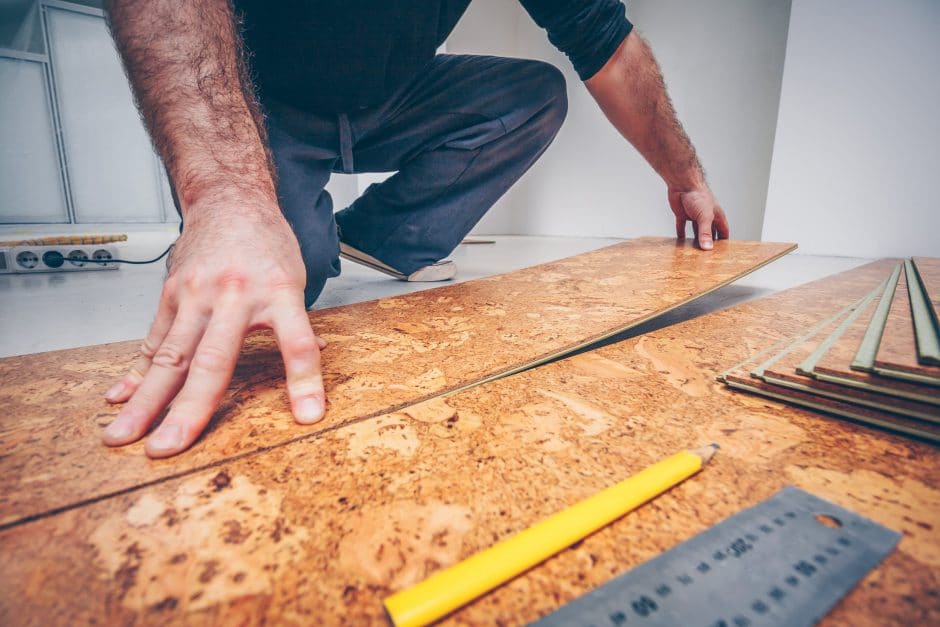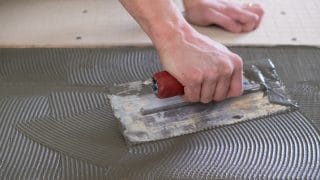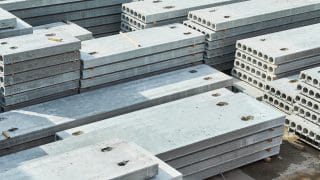
Timber and concrete are some of the most common materials used in construction. However, those two materials are also harmful for the environment. Timber and wood product production is one of the 4 leading causes of deforestation, particularly tropical rainforest destruction, in the world. Making concrete produces about .93 pounds of carbon dioxide for every pound of concrete, or about 4 billion tons of carbon dioxide annually (which is approximately 8% percent of the world’s total annual greenhouse gas emissions).
Procurement and supplier intelligence company Beroe Inc. reports that sustainable building materials are the trend in the global construction industry, driven by the cost savings of using sustainable materials (up to 15%), compliance with laws, and incentives to increase sustainable practices like the increased demand for them in the market. These are the basic qualities that define sustainable building materials.
Qualities of sustainable building materials
Building materials can be considered sustainable if they meet some or all of the following qualifications:
- They are sourced locally. As businesses try to reduce their carbon footprint, they try to diminish the environmental impact of sourcing material, including shipping it. Sourcing material locally reduces the amount of CO2 released in transporting materials.
- They are (or may be) recyclable. Concrete, steel, plastic, wood, and bricks are all building materials that can be recycled. In fact, recycled steel has become a major component of sustainable construction projects. Reclaimed wood and brick have become desirable looks in many commercial and residential buildings.
- They are created in a sustainable way. Manufacturers that make materials in an environmentally friendly, low-waste way, compensating for their greenhouse gas emissions when possible and disposing of waste responsibly ensure that the production cycle of the material is more environmentally friendly, too.
- They’re made of recycled material. The construction industry is getting creative with recyclables: think tile made of recycled broken car windshields (used for backsplashes and bathroom tile), coal fly ash—leftover silica made from burned coal—made into concrete (ashcrete), building blocks made of compressed throwaway plastic, and even roofing tiles made of recycled disposable diapers.
Types of sustainable building materials
Considering the growth of the industry for sustainable materials, it would be impossible to provide an exhaustive list of all its innovations. Still, here are some of the major players in the sustainable construction movement:
Straw bales
The first documented use of hay bales in construction in the United States was a schoolhouse in Nebraska built in the 1890s that was eaten by cows about 10 years later. Once those resourceful farmers realized they could plaster their straw-bale structures, they hit on a great insulator and even framing material. Now straw bales are back: Made from agricultural waste and tightly packed and plastered, they’re strong and surprisingly fire-resistant. Contemporary home builders love straw bales for their soundproofing ability.
Wool insulation
Homebuilders have focused in recent years on sustainable alternatives to chemical-filled insulation. While fiberglass and cellulose, both common insulation materials, are often made of recycled plastic reinforced by glass fibers or recycled paper fiber, the methods used to create them aren’t always environmentally friendly.
Enter sheep, whose wool can both increase the energy efficiency of a home and soundproof it. Wool also lasts longer than some natural insulators like cotton and straw. Plus, it’s naturally flame-resistant and non-toxic. Its downside: Wool often needs to be treated to resist fungi and insects.
Recycled steel
Steel is both strong and pliable, allowing large commercial buildings to sway slightly to resist high winds. Historically, it hasn’t been used as frequently as wood to frame residential buildings, because of the lower cost of timber. But steel is 100% recyclable and is emerging as a hero in the green building industry. According to the American Iron and Steel Institute, an association of American steel producers, a 2,000-square-foot house requires about 50 trees to build, but a frame made from recycled steel comprises the equivalent of six scrapped cars. Steel doesn’t burn or warp, it’s water- and pest-resistant, and because it’s so durable, rarely needs to be replaced.
Recycled plastic
Giving old plastic and other trash new life is one way the construction industry is reducing greenhouse gas emissions and mitigating waste in landfills. Plastic from soda bottles and old nylon can be made into fiber for carpet production; reused plastic can be used to make roofs, cable pipes, fencing materials, and structural lumber.
Bamboo
Bamboo is one of the fastest-growing plants in the world, which makes it one of the most sustainable building materials because it regenerates itself. It is also endemic in every continent except Europe and Antarctica, making it a locally sourced product in many cases. While bamboo is a grass, it has a high strength-to-weight ratio and is long-lasting, so it’s a good option for flooring. Its downsides: Bamboo must be treated to resist insects and can swell and warp with exposure to moisture.
Timber and concrete are some of the most common materials used in construction. However, those two materials are also harmful for the environment. Timber and wood product production is one of the 4 leading causes of deforestation, particularly tropical rainforest destruction, in the world. Making concrete produces about .93 pounds of carbon dioxide for every pound of concrete, or about 4 billion tons of carbon dioxide annually (which is approximately 8% percent of the world’s total annual greenhouse gas emissions).
Procurement and supplier intelligence company Beroe Inc. reports that sustainable building materials are the trend in the global construction industry, driven by the cost savings of using sustainable materials (up to 15%), compliance with laws, and incentives to increase sustainable practices like the increased demand for them in the market. These are the basic qualities that define sustainable building materials.
Qualities of sustainable building materials
Building materials can be considered sustainable if they meet some or all of the following qualifications:
- They are sourced locally. As businesses try to reduce their carbon footprint, they try to diminish the environmental impact of sourcing material, including shipping it. Sourcing material locally reduces the amount of CO2 released in transporting materials.
- They are (or may be) recyclable. Concrete, steel, plastic, wood, and bricks are all building materials that can be recycled. In fact, recycled steel has become a major component of sustainable construction projects. Reclaimed wood and brick have become desirable looks in many commercial and residential buildings.
- They are created in a sustainable way. Manufacturers that make materials in an environmentally friendly, low-waste way, compensating for their greenhouse gas emissions when possible and disposing of waste responsibly ensure that the production cycle of the material is more environmentally friendly, too.
- They’re made of recycled material. The construction industry is getting creative with recyclables: think tile made of recycled broken car windshields (used for backsplashes and bathroom tile), coal fly ash—leftover silica made from burned coal—made into concrete (ashcrete), building blocks made of compressed throwaway plastic, and even roofing tiles made of recycled disposable diapers.
Types of sustainable building materials
Considering the growth of the industry for sustainable materials, it would be impossible to provide an exhaustive list of all its innovations. Still, here are some of the major players in the sustainable construction movement:
Straw bales
The first documented use of hay bales in construction in the United States was a schoolhouse in Nebraska built in the 1890s that was eaten by cows about 10 years later. Once those resourceful farmers realized they could plaster their straw-bale structures, they hit on a great insulator and even framing material. Now straw bales are back: Made from agricultural waste and tightly packed and plastered, they’re strong and surprisingly fire-resistant. Contemporary home builders love straw bales for their soundproofing ability.
Wool insulation
Homebuilders have focused in recent years on sustainable alternatives to chemical-filled insulation. While fiberglass and cellulose, both common insulation materials, are often made of recycled plastic reinforced by glass fibers or recycled paper fiber, the methods used to create them aren’t always environmentally friendly.
Enter sheep, whose wool can both increase the energy efficiency of a home and soundproof it. Wool also lasts longer than some natural insulators like cotton and straw. Plus, it’s naturally flame-resistant and non-toxic. Its downside: Wool often needs to be treated to resist fungi and insects.
Recycled steel
Steel is both strong and pliable, allowing large commercial buildings to sway slightly to resist high winds. Historically, it hasn’t been used as frequently as wood to frame residential buildings, because of the lower cost of timber. But steel is 100% recyclable and is emerging as a hero in the green building industry. According to the American Iron and Steel Institute, an association of American steel producers, a 2,000-square-foot house requires about 50 trees to build, but a frame made from recycled steel comprises the equivalent of six scrapped cars. Steel doesn’t burn or warp, it’s water- and pest-resistant, and because it’s so durable, rarely needs to be replaced.
Recycled plastic
Giving old plastic and other trash new life is one way the construction industry is reducing greenhouse gas emissions and mitigating waste in landfills. Plastic from soda bottles and old nylon can be made into fiber for carpet production; reused plastic can be used to make roofs, cable pipes, fencing materials, and structural lumber.
Bamboo
Bamboo is one of the fastest-growing plants in the world, which makes it one of the most sustainable building materials because it regenerates itself. It is also endemic in every continent except Europe and Antarctica, making it a locally sourced product in many cases. While bamboo is a grass, it has a high strength-to-weight ratio and is long-lasting, so it’s a good option for flooring. Its downsides: Bamboo must be treated to resist insects and can swell and warp with exposure to moisture.
Rammed earth
Rammed earth refers more to the building technique, which is generally a combination of raw materials like chalk, lime, or gravel, compacted together in a framework, than a material. Rammed earth is one of the oldest building methods, with evidence of its use dating back to the Neolithic Period, which shows you how long it lasts.
This method has been revived in sustainable building, though today it is be fortified with rebar or bamboo. When it’s pressed into forms, it creates walls that can feel like concrete. One of the reasons the green building industry likes this method is that rammed earth walls and floors can be warmed by the sun in the day and slowly release their warmth in cool evenings, making them a natural form of thermal storage. There is evidence of its use dating back to the Neolithic Period, which shows you how long it lasts.
Ferrock
The word “Ferrock” comes from its composition of iron-rich ferrous rock. It uses recycled materials like steel dust and ferrous rock leftover from industrial processes to create a building material that’s similar to concrete, only stronger. Ferrock is carbon neutral since it absorbs carbon dioxide as it hardens. It is now mixed and poured for driveways, staircases, and other outdoor projects. One of Ferrock’s main advantages is in a marine environment as an alternative to concrete. Whereas sulfates in seawater erode concrete paths and structures, these same sulfates can strengthen ferrock.
Engineered wood
Engineered wood, also known as composite wood and manufactured wood, is a wood product made by binding pieces of real wood, shredded wood fibers, sawdust, and adhesives to create material that looks and acts like wood but is often stronger. Engineered wood boards are generally made from the same hardwoods and softwoods used to manufacture lumber, but mixed with additives like adhesives. This type of wood often utilizes waste wood from sawmills, and is treated through chemical or heat processes to produce wood that meets size requirements that are hard to find in nature.
Benefits of using sustainable building materials
- Reduced waste. Using sustainable building materials, like recycled steel or ferrock, can reduce the amount of construction waste in the overall waste stream.
- Reduced emissions. Concrete production alone accounts for approximately 8% of the world’s total annual carbon output. By reducing the use of concrete in favor of other, more sustainable materials, a builder can reduce the overall carbon footprint of a building. Additionally, some sustainable materials can be sourced locally, meaning that the carbon from transportation is also reduced.
- Lower costs. While some sustainable materials and building methods are more expensive because they are new technologies, many sustainable building methods are actually based on ancient technology (like rammed earth, for example). Depending on the type of material and methods a builder chooses, they could reduce the overall cost of a construction project by up to 15%.
MT Copeland offers video-based online classes that give you a foundation in construction fundamentals with real-world applications, like wood materials. Classes include professionally produced videos taught by practicing craftspeople, and supplementary downloads like quizzes, blueprints, and other materials to help you master the skills.






